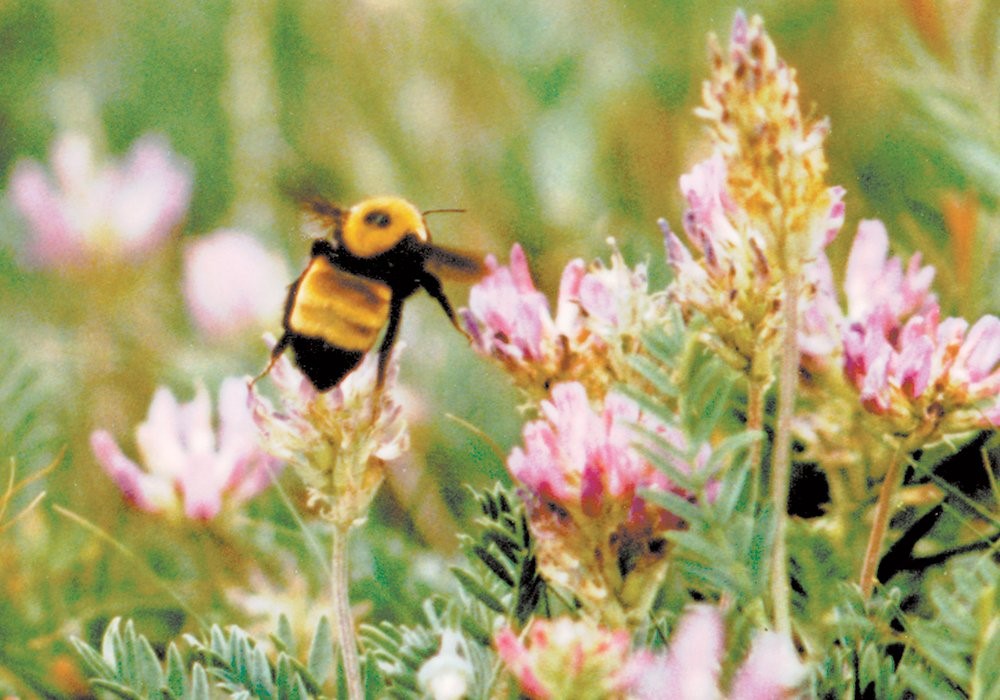Scientists from Simon Fraser University say some species are in decline but not all of them. | File photo
In the winter of 2020, National Geographic ran a piece with a provocative headline: “Bumblebees are going extinct in a time of ‘climate chaos’.”It’s easy to find similar articles on the internet, which claim that bumblebees and wild bees will be extinct in 20 years or less because of rising temperatures.A recent study from Simon Fraser University in British Columbia questions that narrative. Melissa Guzman, an ecologist at SFU who studies biodiversity data, said the real story about bumblebees is more complex.There are more than 50 bumblebee species in North America and about 250 types of bumblebees around the world.Many of those species are not suffering. They’re doing fine.“If you look at all the species, on average, there is no decline,” Guzman said. “Some are OK, some are increasing and some are decreasing.”In May, Guzman and her SFU colleagues published an article in Biological Conservation that said a highly publicized study on bumblebee extinction was flawed.“We show that the method used by Soroye et al. (2020) yields biased estimates of declines, whereas our (method) does not,” the paper said.The National Geographic article on bumblebees was based, in large part, on research done at the University of Ottawa. Peter Soroye, study leader, said the drop in bumblebee numbers is related to climate change.“We found that populations were disappearing in areas where the temperatures had gotten hotter,” Soroye said in February 2020. “If declines continue at this pace, many of these species could vanish forever within a few decades.”
Soroye, a PhD. student in biology, used data on 66 bumblebee species from North America and Europe, collected between 1900-2015. He compared data at locations where bumblebees are found now to where they were found in the past.Guzman and her colleagues at Simon Fraser were surprised by Soroye’s conclusion that bumblebees are dying because of climate change and they looked at his study in detail.Counting wild bees is complicated. Unlike polar bears, where you can fly over part of the Arctic and count bears, that’s not possible with bees.Bee scientists rely on observational data from citizen scientists or researchers.One such effort is www.bumblebeewatch.org. Using the website, citizen scientists take a photo of a bumblebee and upload it so an expert can identify the species. The detection is put into a large database — with hundreds of other locations across North America.Another big database of bumblebee detections is managed by Leif Richardson, a bee expert from Vermont.However, to mean something, modern day observations of bumblebees must be compared to an historical record.Guzman and her colleagues found flaws in how Soroye used the data.On some sites, for example, a field in North Dakota, there may a year or two where there are no sightings of any bumblebees —perhaps no detections in 2012 and 2013.“In that particular site in North Dakota, we have no record. Zero bumblebees have been observed,” Guzman said. “You can’t know whether anybody actually went there and didn’t see anything. Or (maybe) people didn’t go there.”That’s a problem.There are many sites like the North Dakota example, where in recent years there is no confirmed record of someone going to look for bumblebees.Soroye included that data in his study. That assumes there were zero bumblebees of all species at those sites. It skews the data in favour of a decline.The SFU scientists, however, omitted those fields from their analysis. They only considered places where volunteers or scientists spotted at least one species of bumblebee.Soroye, in an email, said the SFU scientists used “very conservative” assumptions in their model. But his conclusion, of significant declines, is supported by other evidence.At locations that scientists and volunteers consistently checked for bees, “the average number of species… declined by about 18.6 percent.”“One of the big strengths of our paper was that every result is supported by multiple lines of evidence,” he added. “(That) gives us a lot of confidence in our original results.”Soroye also challenged Guzman’s comment that, on average, bumblebees are not declining. Yes, some bumblebees might be doing better. But many, many species are not.“It’s well known that climate change and other human impacts tend to produce winners and losers,” he said. “(But) there have been more losers because of the way that climate change exposes bees to… more severe and frequent extreme temperature events.”Guzman said certain bumblebees are declining in specific parts of Canada and the United States. In B.C., a species called Bombus occidentalis is in trouble.“(It) is an important pollinator here in B.C. That bumblebee has been decreasing tremendously,” Guzman said.But climate change isn’t the only reason why Bombus occidentalis is suffering. It could be habitat loss, disease and many other factors.The public should be informed about wild bees that are at risk in their area so they can take local action to preserve the species, said Sarah Johnson, a bee expert at SFU and one of the study’s authors.That’s preferable to the “all bees will be extinct in two decades” message, which makes the problem seem insurmountable.
“If you just say every species (of bumblebee) is declining… (then) we’re already in this space where everything is falling apart, past the point of no return…. It makes people feel there is no point in doing anything.”
Bumblebee decline claim in dispute | The Western Producer









